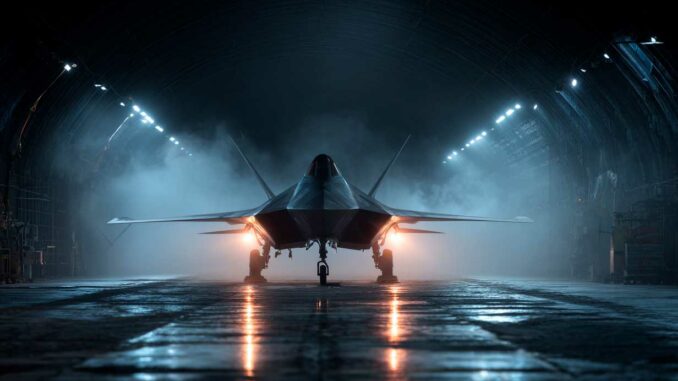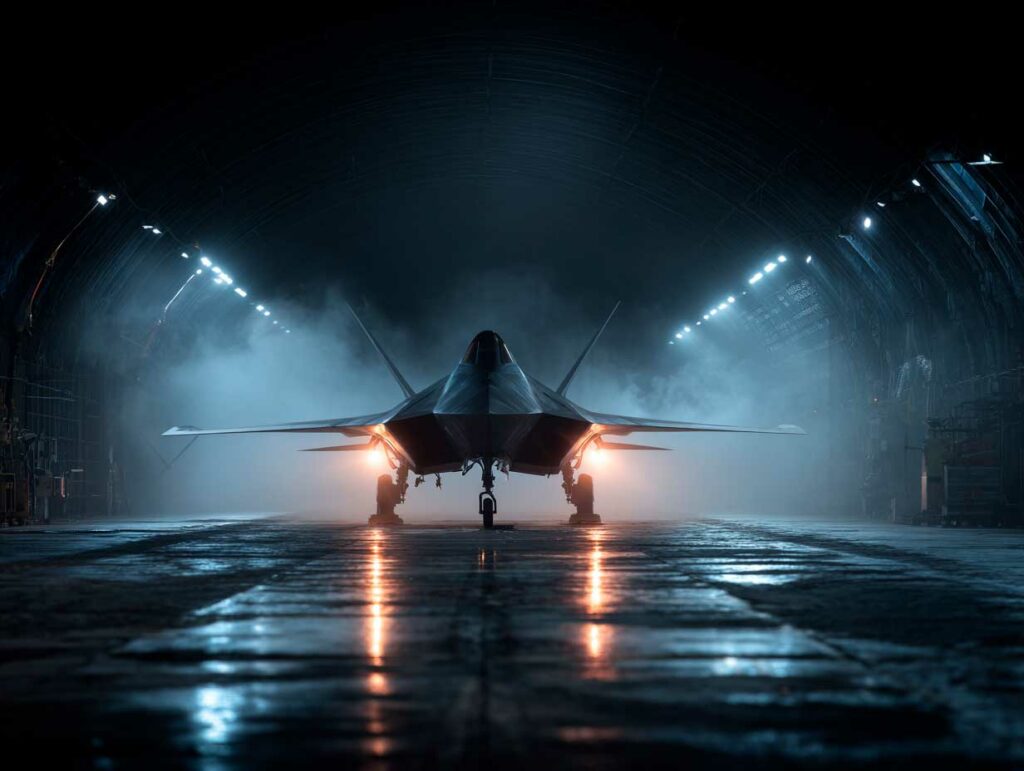
USAF NGAD program: financial challenges, rivalry with the Chinese J-20 fighter jet, operational prospects.
The US Air Force is continuing to develop the NGAD (Next Generation Air Dominance) program, designed to replace the F-22 Raptor. This project aims to integrate a sixth-generation piloted fighter, designated F-47, into a set of interconnected systems, including autonomous combat drones called CCAs (Collaborative Combat Aircraft). The demonstrator for this aircraft, developed by Boeing, has already flown in secret. But despite technological advances, the program is now facing intense debate over its cost. Publications on X mention a unit price of more than $300 million, three times that of an F-35, raising questions about the project’s budgetary sustainability. However, in a context of growing rivalry with China and its J-20 fighter jet, the NGAD is considered essential to guarantee US air superiority in the coming decades. While little operational information has emerged recently, the strategic stakes remain high. This article presents a detailed analysis of the program, its technical characteristics, and its financial implications, while assessing its place in the global air competition.
The strategic and technological context
The NGAD is not limited to the design of a new aircraft. It is a comprehensive program to create a weapons system consisting of a sixth-generation manned fighter, companion drones (CCA), and an open software architecture. The F-47, as the future aircraft has been named, will gradually replace the F-22. Around 200 units are planned, accompanied by more than 1,000 CCA drones. These drones will have specific functions: jamming, electronic warfare, missile launch and intelligence gathering. Each F-47 should be accompanied by at least two drones, in addition to support for the F-35s.
The F-47’s engine, derived from the NGAP (Next Generation Adaptive Propulsion) program, will offer 10% more thrust and reduced fuel consumption thanks to adaptive cycle technology developed by General Electric and Pratt & Whitney. This type of engine allows the airflow to be adapted to the flight phase, optimizing performance over long distances or during offensive maneuvers.
The fighter itself will incorporate advanced stealth, sensor fusion, and encrypted communication technologies with drones. It will be capable of operating in highly contested environments against modern defense systems such as the S-400 or future hypersonic systems. The aircraft is also expected to feature software modularity, which will facilitate system updates without having to dismantle the aircraft. This concept, already tested on the F-35, is to be taken further with the NGAD.
Faced with the Chinese J-20, whose recent developments have increased its range, agility, and stealth, the US Air Force wants to maintain a qualitative advantage. The NGAD is scheduled to enter operational service around 2030, with initial capabilities expected between 2028 and 2029. However, this schedule will depend heavily on future budget decisions.

Budgetary challenges, critical issues, and recent decisions
The estimated cost of the F-47 exceeds €275 million per unit, making it one of the most expensive aircraft ever designed. By comparison, an F-35A costs around €90 million. For the overall development of the NGAD program, the estimated budget could exceed €50 billion by the end of the decade, including aircraft, drones, engines, and support infrastructure.
Between 2022 and 2024, nearly €5.1 billion has already been invested. For 2025, the budget request amounts to more than €2.5 billion, including €500 million for CCA development. These figures have provoked strong criticism, including within Congress, where several elected officials consider these expenditures to be out of touch with the Pentagon’s financial realities. Others warn of the risk of cannibalizing other major programs, such as the B-21 bomber or the modernization of nuclear deterrence.
In March 2025, Boeing was officially designated as the prime contractor for the NGAD fighter, following a competitive bid involving Lockheed Martin and Northrop Grumman. This choice marks a break with the past, as Boeing had not designed a new manned fighter since the F/A-18E/F Super Hornet in the 1990s. The initial contract covers the pre-production phase and could reach $20 billion by 2029.
However, voices within the US Air Force are calling for a reduction in the number of F-47s in favor of a larger fleet of CCA drones, which are considered more cost-effective. Each drone would cost between €22 million and €28 million depending on the version, which would allow for more strike vectors without exposing pilots. The current doctrine, however, continues to favor human presence in critical missions, at least until 2040.
The importance of public debate and technological rivalry with China
Posts on social media, particularly on X, reflect intense debate among experts, military personnel, and analysts. Some believe that the ambitions of the NGAD program exceed the current funding capabilities of the USAF. Others point out that strategic competition with China requires massive investment, or else the technological advantage will be lost.
The Chinese J-20 fighter jet, produced by Chengdu Aircraft Corporation, has already surpassed 200 units delivered. Its range exceeds 2,000 kilometers, and the latest versions are said to incorporate a new-generation AESA radar. Beijing is also investing in artificial intelligence to develop its own escort drones.
The pressure exerted by this rise in power is forcing the United States to maintain its qualitative lead. However, if the NGAD is not operational in time, the risk of strategic imbalance will increase, particularly in the Indo-Pacific. Several military simulations conducted over the past two years by RAND and the Center for Strategic and Budgetary Assessments confirm the crucial importance of a comprehensive NGAD system to deter any Chinese offensive in the region.
But these strategic challenges are hampered by political realities. The fragmentation of the defense budget, tensions in Congress, and competing priorities (cybersecurity, space, conventional weapons) make it difficult to secure a massive and sustained increase in funding. In this context, the NGAD program could be forced to make technical compromises or limit production to a smaller scale than planned.
The NGAD program reflects a legitimate technological ambition in the face of emerging threats, but its cost raises serious questions about its feasibility on a large scale. At €275 million per unit, the model’s viability depends on a delicate balance between volume, capability, and strategic relevance. The combination of the F-47 and CCA drones is consistent in a complex operational environment, but concentrating investment on a single system exposes the USAF to the risk of failure if deadlines slip or tactical requirements change too quickly.
Faced with a rapidly expanding China, postponing or scaling back the program would amount to ceding the initiative. But sacrificing other essential capabilities to finance an overpriced aircraft would be no more rational. The USAF must choose between an exclusive, extremely high-performance but costly model, or a more modest but sustainable operational compromise.
War Wings Daily is an independant magazine.